Best compost for fruit trees and how to plant them. Give your young trees a superb start by creating the soil environment they need to thrive.
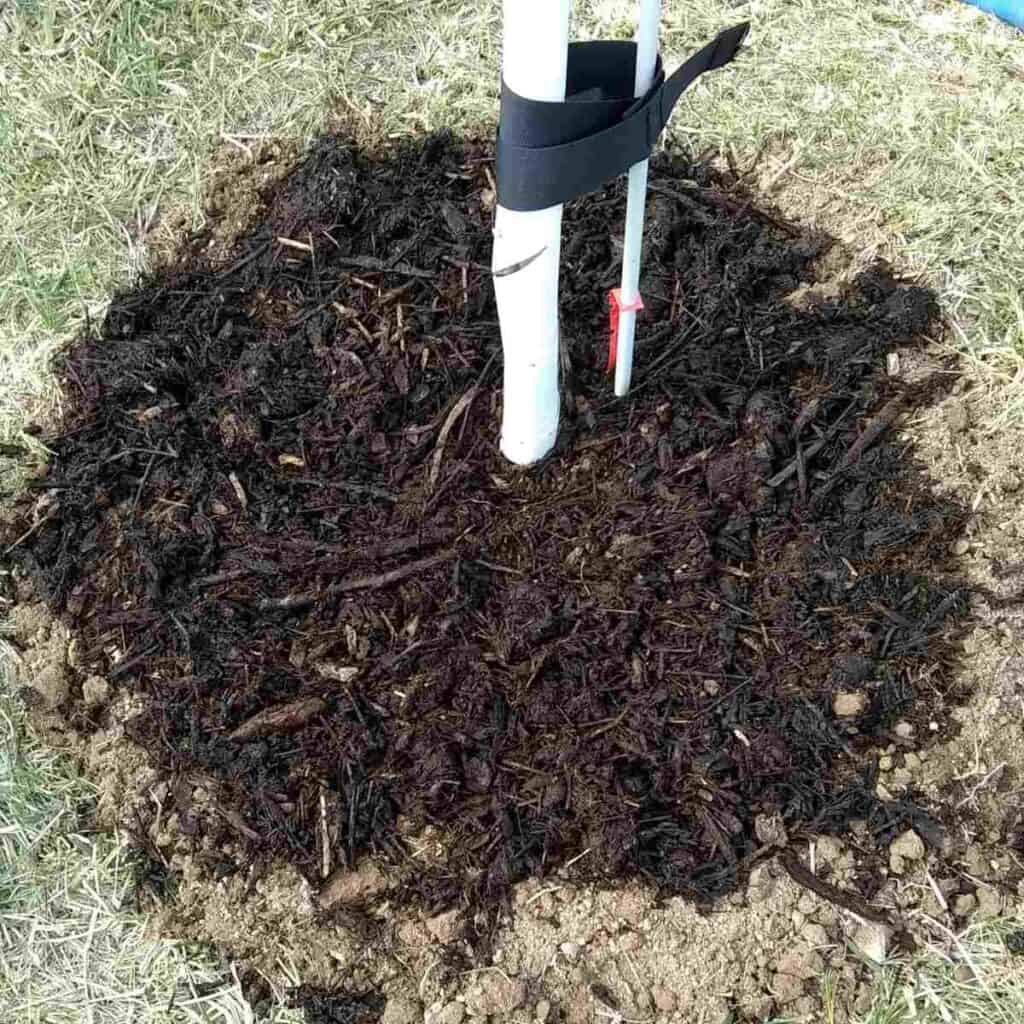
This post contains affiliate links, which means I make a small commission at no extra cost to you if you click through and make a purchcase. See my full disclosure here.
Rewind …
It’s the dead of winter and I’m getting cabin fever, yearning for the sight of fresh green growth and rebirth. If you’re anything like me, you start to itch to go back outside and dig in the garden. You have all sorts of fantasies about what you want to plant. So you scour the abundant seed and plant catalogs that came in the mail or look them over on the internet. It’s so tempting to load up those shopping carts with hundreds of items and before you know it, you have a big box or two of seeds coming. …And a few dozen trees. Let’s see, a few apple tree seedlings, a young pear tree with three varieties grafted on, a peach, and several plum and cherry varieties.

Yep, that’s how that went for me, except I ordered about ten dozen trees this year. Yikes! My goal for moving to my new piece of land was to plant a food forest. And, well, trees need to be planted right away, because they take years to bear fruit, right?
Admittedly, I’m a fruit and nut tree ‘nut’. I want to cover this place with food-producing trees. And fast. My dream is to have a true food forest. As in acres of trees with edible crops.
Now that all these trees are coming. I realize that my reality will be to dig and dig and dig some more.
Create The Best Compost For Fruit Trees
There is one thing that should be done before anything else, even before the trees are coming. That is to make compost. I’ll outline below, how to make compost for fruit trees, but know that it will take about a month or more to make even fast compost. So best get started early. Check out my post on making fast 18-day compost if you have little time.
You can, of course, go to a store and buy a bag of mushroom compost of manure compost. Many garden centers sell it by the yard, and dump it into your pickup.
So How Do You Plant trees?
How do you plant a tree, or two or three?
There are many things to consider. What is the best location? Is my soil good for the trees I want to plant, and if not, what do I do about it? When is the best time to plant? How to prepare for planting? What to put in a hole when planting trees? Can I do something special to give this tree the best chance to thrive? Do I need to do anything to the tree after planting?
Are you wondering how to prepare a planting site? Well, I can help you learn how to give your trees the best chance to grow healthy and produce abundant food. You have come to the right place. Here I put together a step-by-step guide for your planting success. You can skip to my summary below if you’re in a hurry.
Soil Matters When Planting A Tree Seedling
The best way to improve soil fast is with the best compost for fruit trees. Compost is a great booster for the young tree and gives the tree long-term, slow-release nutrients. And it helps increase soil life and prevent the soil from drying out too quickly.
Having great soil is a definite advantage, but by preparing your soil, you can remedy all kinds of problems. Over the years I have gardened at several locations. There I encountered many types of soil and planted many trees. One thing I learned is not only the importance of where and when to plant, but soil is a most important aspect to consider. Soil is what gives life to your tree. It provides the nutrients for it to grow and eventually to fruit.
The healthier your soil, the better the chance to grow healthy fruit trees. Your fruit will be more abundant and nourishing. Pests and disease nary stand a chance when your tree is strong and resilient. When it is growing in an ecosystem that balances itself. Pests and diseases thrive on sickly plants, which have low immunity and little fight in them. Fungal diseases such as peach leaf curl, are hard to combat but less likely to take hold in vigorous trees.
This begs the question:
What Can I Do To Grow A Healthy Tree?
1. Choose The Best Location
Hopefully, you have done your research to find what grows best in your area and growing zone, before you ordered your tree. Your climate is going to determine the type of fruit and often, what variety you can plant.
Now it is important to choose the right location on your property.
One of the most important considerations for fruit trees is to place them in full sun. The amount of sun a tree gets is in direct proportion to the amount of fruit it will produce.
2. Improve Your Soil With The Best Compost For Fruit Trees
Your type of soil matters, but more important is, will it retain sufficient water or too much water. If you have heavy clay soil, understand that poor drainage can kill a tree. Likewise, very sandy soil can dry out fast and your tree may not get enough water to thrive. Soil can be improved over the years. But the best thing you can do right now is to apply the best compost for fruit trees for a short-term boost. Then cover the area with thick mulch for long-term benefits.
3. Testing Drainage:
Test your drainage by digging a hole where you want to plant the tree and fill it at least half full with water. If it drains within a couple of hours, all is well. If not, it is best to find a more suitable spot.
What to do if this location is your only option?
- Planting the tree on a mount above the soil line will help with drainage.
- Alternatively, you can select a tree that is not so picky about having good drainage.
- Planting on the berm of a swale is another good strategy for poor draining soil. This sets up a great system to improve drought resistance and create many future benefits to boot if it’s done right.
- A great strategy, if you can wait a season or two before planting, is to grow cover crops that encourage soil building. This will improve a poor location for years to come.
4. What Is The Best Month To Plant A Tree?
Here is a pro tip: the best time of year to plant is in the fall when the tree goes dormant. For many of us in temperate zones, that would be from mid-October until the ground freezes. You’ll see the trees around you shed their leaves. This is when they put all their energy into root growth instead of leaves and flowers.
Plant now, and the tree will have a chance to grow a strong root system over the winter. The tree will set itself up for gathering more resources which it can direct toward putting out vigorous new growth in the early spring.
The second best time is in Spring. Most nurseries sell their trees in spring, so you might want to plant then. There is nothing wrong with that, as long as you plant fairly early before the weather gets too hot, and ideally before the tree wakes up and starts leaving out.
5.The Ideal Procedure For Preparing Soil And Making The Best Compost For Fruit Trees Is To Plan Ahead
Once you pick a location, it is time to prepare the planting area. If you can, take the time to prepare the site for a growing season or two before planting there. That is the preferred approach. Here are a few ways to do that:
- Method 1
Till an area about 8 feet across where you are going to place your tree. Plant cover crops for a season or two to build soil. It should be a diverse mix of many plants. Try to include legumes, grasses, flowering species, and deep-rooted plants like radishes. Let them grow until they start to flower. Now chop the materials and just spread them around and let the roots rot in the ground. Alternatively, you can mow the grass and weeds very short. Apply a thick layer of the best compost for fruit trees and plant cover crops into it. - Method 2
Place cardboard or a few layers of paper over a well-mowed area, about 8 feet across, round or square. Cover with layers of organic material such as wood chips, grass clippings, clean, unsprayed straw, hay, plant-based food scraps, chopped leaves, manure, garden scraps, shredded paper, ripped-up newspaper or whatever you have that is biodegradable. This is also called ‘sheet mulching’. More on that in my post 22 types of compost. Make it at least 6 inches thick, 12 inches is better. This will do several things:- suppress and kill weeds
- add organic matter
- encourage soil life to increase
- improve water infiltration
- keep the area moist
- soften hard sod
- When it’s time to plant, just push aside several feet of the mulch material in the center and start digging your hole there. This gives you a great head start for a healthy tree. Now proceed with the next step.
Preparing The Tree
What to do when your trees arrive. If you receive your trees but can’t plant them right away, they can stay wrapped in a cool dark or shady spot for a couple of days. Keep them moist.
If you have to wait several weeks, there are a couple of options:
- Pot the trees up into large containers with plenty of room to accommodate the root-balls.
- Heel them into some soil or preferably sawdust. This can be in a trench dug in the ground or a large plastic tub or similar container. Even a large box will do for a few days and the cardboard can be used as mulch later. This is especially helpful when you have several trees to store.
Trees might be sold potted up, but most often they will be bare-rooted with no soil attached. You can treat them the same for planting. Take any wrapping off the tree. Inspect it, and cut off any broken branches or roots. If the roots are circling in a pot, untangle and straighten them out. It helps to soak the whole rootball to loosen the dirt first. Any circling roots can later girdle your tree or the root-ball and kill it. If necessary, they can be cut to prevent these problems.
Before planting I give the roots a good soaking while I’m digging the hole. To the water, I add 2 tablespoons of activated EM-1, LAB, or liquid fish fertilizer per gallon, which will hydrate the plants and inoculate the roots with some immune-boosting properties and beneficial bacteria. This will help with transplant shock and give the plant a strong start once in the ground. Use that water later for watering plants or as a nutritious foliar spray.
Preparing The Site
Pick your perfect spot. It should be in full sun, at least 6-8 hours per day, and have enough room to accommodate the mature tree when it grows older. That can mean 20 – 30 feet diameter for a standard tree. Allow for about 15 – 20 feet for a semi-dwarf and about 10 feet for a dwarf tree.
Dig a large shallow hole, about two to three times the width of your root ball and about as deep as your tree’s roots. Keep the sod in a separate pile after shaking as much of the good topsoil and worms out of it as possible.
This sod can be added to a compost pile, or I often use it to even out dips and holes in my landscape. If you’re on a slope, you can also use it to make a small dam behind your tree to keep water from running off too quickly. Feed the grubs you find to the chickens, if you have them. When removing the soil from the hole, I pile it on a large piece of cardboard or a tarp. This makes back-filling easier later and keeps good soil from getting lost elsewhere.
Reasons Why The Size Of Your Planting Hole Is Important:

Don’t dig deeper than necessary to accommodate the depth of the roots.
- Don’t dig deeper than necessary to prevent future settling of the tree. The bottom of the hole should be solid where the roots touch.
- The shape of your hole is not important for proper root development, but how you fill it later is.
- Plant your new fruit tree deep enough to cover the roots but not more.
- Never plant the roots deeper than they were at the nursery.
- Ideally, plant slightly high, the soil line should be an inch or two below where the roots come out of the trunk.
- If your tree has a graft union, which is the case with almost all fruit trees from a nursery, then the graft union has to remain at least 2 inches above the soil line. When a graft union touches the ground the tree might sprout roots from above the graft, which will nullify the qualities that the rootstock was meant to impart, such as the final size of the tree.
- When you plant a tree too deep, the bark on the trunk will rot and that could kill the tree.
- Better plant too high than too low.
- It allows for a slight bit of settling by planting high.
- Spread the roots out as far as they will go and make your hole at least twice as wide. All the roots should radiate straight out from the tree trunk without overlapping or tangling as far as they will reach with room to spare. Never lay them in a circle to fit into a too-small hole.
- If you have hard clay, score the sides of the hole to give the roots a channel to follow and so they won’t hit a solid ‘brick wall’ when they start venturing outward in search for nutrients and water. Hitting a solid wall could encourage them to travel along that wall and begin circling, instead of breaking through it.
What Do You Put In Your Fruit Tree Hole?

This is the million-dollar question!
There is much conflicting advice on what amendments should go into a fruit tree hole. However, modern experts agree that it is not a good idea to add any fertilizer or compost to the back-fill. Save the best compost for fruit trees for later. Filling with compost and adding a brew of fertilizers, will encourage the tree roots to just hang out inside that cozy planting hole you dug for it. The roots will not venture out to seek what it needs in the surrounding terrain. It will set up that tree to become lazy and become root-bound, just as if it were growing in a planting pot. Adding rocks for drainage will not work either, so you can skip those. Most things people add are unnecessary or bad for the tree. There are a couple of exceptions though. Read on:
How To Give Your Tree The Best Odds To Thrive!
There are a few things you can add to the filling soil, to boost a tree’s chances for growing up healthy and strong.
For immediate benefits to the young roots and for long-term success that lasts into old age, I add inoculated biochar to the hole. Several studies were released recently that confirmed the ancient wisdom of this practice. They suggest that trees that have been planted with biochar, have a better chance of surviving, are recovering from a transplant faster, and grow healthier for the very long term. Biochar will improve the soil forever.
Add Biochar!
Charcoal does not add nutrients, but is pure carbon, which won’t break down. Especially if activated, it is full of tiny spaces that will provide housing for gazillions of the micro critters that live in the soil. Charcoal’s many chambers are used to store nutrients, which can be released as needed. I will cover a lot of information on biochar and how to make it in later posts. Sign up for updates on this and much more!
This is what I call the treasure that’s buried in your garden. I strongly suggest you add some around the root zone of your tree no matter what soil you have. Here is a source for biochar if you want to buy it.
Mix 10-20 percent of Biochar by volume into your back-fill. This amount will provide the greatest benefits. Less is better than none but will not give as great of an advantage. Adding more than 20 percent could impede tree health because it will change the soil texture too much. Be sure that your biochar is inoculated (saturated or soaked) with cow, goat, chicken, or horse manure, urine, or compost before adding it to avoid nutrients being absorbed out of the soil and becoming unavailable for the tree.
Don’t Use Compost In Your Back-Fill!
In the past, I’ve made lots of fruit tree planting mistakes. I was digging my planting holes very deep. Then proceeded to fill the hole with compost and planted the trees deeper than I should have. I wanted to ensure nutrient availability and stability for the little tree. Yet, this caused them to be stunted or they ended up dying. After much research, I found out why and that, what I thought was ‘extra good care’, was in truth detrimental to the tree’s health. Now that I know better, I make sure to plant just deep enough and keep the back-fill fertilizer- and compost-free.
Providing uncompacted soil around the width of the hole, however, is important. That is why you want to dig the hole wider than the roots can reach. This will encourage them to continue spreading outward in search for water and nutrients.
Add Rock Dust If Needed!
If your soil mineral content is low, as is often the case with sandy soil, where minerals have leached out, you can add some rock dust into your back-fill. This is also beneficial if your soil is very depleted, from previous heavy farming for example. And some nutrients are just not present in some areas.
Then, in the second year and subsequent years, just add a good sprinkling around the drip line of the tree, once or twice each year. This will keep the tree healthy and impart immunity and vigor to the new plant growth.
Rock dust, such as Azomite, is slow-release, very fine ground rock, which is full of minerals and trace elements that may be missing in your soil. My best advice is that you perform a soil test before adding such amendments. If your soil is already full of minerals, you will not need to add rockdust. Provided you feed your microorganisms in the soil well, they will keep mining minerals from the rock already present. But since it is possible that in your region certain trace-minerals are not present, it can be very beneficial to add Azomite or other rock dust. One trace mineral that comes to mind, which is often deficient, is Selenium.
I like to add some Azomite and Greensand, as well as biochar, when building my best compost for fruit trees. I also add rock dust to my biochar inoculation soak. This way it doesn’t go directly into the soil, but the plant can have access to it if it needs it.
Summary Of Amendments:
Here is the list of my favorite soil amendments to mix in with the back-fill soil and links to where you can purchase it:
- Greensand (Rock dust) (spread liberally according to directions, it can’t really be overdosed)
- Azomite (Rock dust) (1-5 lbs per tree depending on how rich your soil is)
- Biochar (Use only activated charcoal that was inoculated with rich compost or other nutrients.10-20% of the back-fill in volume)
Don’t Add Fertilizer, Compost Is Enough.
I don’t advocate the use of conventional fertilizers or nitrogen fertilizer. And even organic fertilizers should be used judiciously, because they can upset a balanced ecosystem. Fruit trees don’t need it and will thrive just with the addition of organic matter such as the best compost for fruit trees, chopped weeds, brush, and grass clippings. Fertilizer does not promote better growth long-term, it could hinder it.
If your soil condition is less than perfect, you can work to regenerate it. Most of us are not blessed with perfect loamy soil, such that we can grow anything. We can however do much to improve soil quality over time by mimicking how nature does it and helping to speed it up a little by making the best compost for fruit trees.
Back-fill
Go ahead and back-fill now. When half done, pour a half bucket of water over it to encourage the soil to wash into all the little cracks and eliminate air pockets. Finish filling the hole with soil and add another bucket of water, flooding the area around the tree. After the water infiltrates, add more soil if needed to level it with the rest of the ground.

Stomping the ground is not good practice. Just watering thoroughly during planting will firm up the soil sufficiently. I like to add a small rim of soil around the lower edge of the back-filled area when on a slope, to keep water from running off and help it soak in.
Apply Your Compost now!
Besides the biochar, the two most important applications are compost and mulch after the hole is filled. As stated, don’t add compost to the back-fill, but it works wonders as a thin layer, about a couple of inches thick, on top of the bare native soil after back-filling. That way nutrients will be released slowly and continually with every watering, and beneficial microorganisms are introduced. I also like to add a small handful of leaf mold, taken from an established tree or forest floor close by, to inoculate the area with native fungus and microbes.
What Is The Best Compost For Fruit Trees?

It is good practice to add one or two inches of compost a few times each year on top of the soil. Sprinkle it around the tree up to the drip-line, to draw worms and other soil life to the area. It will improve the organic composition of the site and help create beneficial, nutritious hummus. This will increase the health of the tree which in turn will keep disease and pests at bay.
Compost introduces beneficial microorganisms that the tree can use to gather nutrients it needs. Any compost is great for that. But fruit trees thrive on relationships with fungal communities and rely on the mycorrhizal network to supply many of their nutrients for optimum growth. For that reason, fungal-based compost has the most value to any tree, no matter what type of tree it is. Fungal-based compost is created by using a large percentage of high-carbon materials. Since it is used as top-dressing, it does not have to be completely finished compost.
What to include when making fungal-based compost
Prime candidates as ingredients of such compost, are high-carbon materials such as leaves and leaf mold, wood chips, twigs, pine needles, sawdust, and shavings. Layer with some nitrogen rich material to introduce a greater amount of microorganisms. The nitrogen will fuel the compost to break down faster using bacteria to do some of the work. Wood Chips, shavings and twigs will take longer to decompose and that is where the fungi move in.
The pile should be turned a couple of times in the first week, to get it cooking. After that it can be left to rot for a few months, fungal hyphae prefer not to be disturbed. And then you will have amazing compost. This compost is not only a good source of nutrients, but full of fungal hyphae, which is the underground part of mushrooms.
These eventually produce the fruiting bodies, which we call mushrooms. And they can include edible varieties, such as morels, king stropharia, and oyster mushrooms that are so delicious, fried in a pan.
Wood Products Are A Sure Way Of Introducing Fungi
Try to include wood products and as many carbon based materials in your best compost for fruit trees pile to encourage these fungal activities. If you have a sawmill in town, you can probably get sawdust for free. Make sure that it does not contain sawdust from treated wood, pallets, or plywood. You can gather fallen leaves at the yearly roadside pickup points or from neighbors. Or try Christmas tree recyclers in January.
If you chop up storm debris from your yard, you can add that as well. Sometimes you can get wood chips from a chip-drop or local roadside cleanup crew. Since you will apply this compost as a top dressing, it does not have to be perfect and can include a good amount of coarse material.
If you use just leaves or wood chips, you just build the pile and then let it do its thing over the course of a year or so. I will not have the diverse makeup of a compost made with browns and greens, but it will have great fungal activity. The resulting compost will be mushroom compost.
If In A Hurry, Make A Fast Compost
If you need compost fast, however, you can also use 18-day compost and when used as a top dressing for the tree, you don’t need to wait for it to age. It won’t be fungal-dominated, but it will have some healthy fungal activity, and will be loaded with nutrients. And if you can add a handful of leaf mold from the woods, or a nearby tree, you’ll still get a good inoculation of local fungus.
You will be mulching on top of this compost and if you use wood chips for mulch, you’ll be introducing all sorts of diverse fungal activity as well.
The importance of Fungal Mycelium:
When making compost, we don’t typically set out to create mushroom fruiting bodies, although they will appear in a healthy compost pile. The important thing is the presence of their mycelium, which will most benefit the tree and help it with nutrient uptake. If you want to know more about different kinds of compost and how to create them, do check out my post on 22 different types of Compost.
Make The Best Compost For Fruit Trees By Mulching

After the soil is replaced and compost added, it is important to apply a deep mulch. This mulch is basically the best compost for fruit trees. It is built on location and it will take a few years to break down. Compost should still be applied around the tree for immediate benefits at planting time, and for extra nutrients over the beginning years, but in the long term, wood chip mulch becomes the best compost for fruit trees. Adding Mulch will accomplish several purposes:
Main benefits of Mulching:
- Discourages and suppresses weeds
- Encourages and shelters fungal and mycorrhizal activity
- Increases soil life activity and diversity
- Improves soil structure
- Increases water infiltration and water holding capacity
- Keeps soil moist and decreases the need for watering
- Eliminates soil erosion from heavy rains or dust clouds from wind
- Adds an aesthetically pleasing aspect
It is important never to leave the ground bare. Always keep the soil covered. Nature does it this way and we do well, to imitate her. If we don’t, she’ll put what she feels appropriate in a bare spot, and that is not necessarily what our preference would be. We usually call those plants weeds.
Applying Mulch:

For effective weed management, apply a layer of cardboard or paper around the tree and cover the compost. Doing so will discourage those vigorous, rhizomatous weeds from reappearing during the few months that it takes for the cardboard to break down. It will help the tree roots to establish themselves. The goal is to keep the area weed-free as long as possible before it needs more mulch. Add mulch as needed throughout the years. And you can plant companion plants that take over the function of mulch.
It is important to keep the mulch away from the tree trunk by a few inches. Mulch that touches the bark, can cause the bark to rot. It can also encourage rodents to approach the tree under the cover of the mulch and start chewing on the tree bark. This happens less when the area around the tree is exposed and rodents will have to fear discovery by predators.
Grow Some Mushrooms!

Here is a cool thing you can do after placing hardwood-based wood chip mulch or straw mulch. Inoculate the area with wine cap mushroom spawn, also known as King Stropharia. Then watch flushes and flushes of mushrooms appear next season. It is worth the price of the spawn if you eat a lot of mushrooms. Do check out my post about growing mushrooms in your garden!
I harvested over 25 pounds in the first year after one planting, which amounted to about a dollar a pound. They tend to come back for several years afterward, especially if you top off the mulch regularly with fresh straw or wood chips. You get a yummy crop of mushrooms to eat and help your tree and your soil by introducing those hyphae to the area. Read more about making mulch from wood chips here.
Staking, Wrapping, And Final Steps:
Remove the tag!
An important detail, often neglected, is to remove the tag. Nurseries usually fasten these around the tree trunk. Do not leave it there or it will choke the tree when the trunk grows thicker. I like to pin it on the ground next to the tree with a ground staple. You can also tie it around a branch where you’re more likely to notice it when the tree puts on much growth and it starts to pinch the branch. If you use a support stake with a rope, you can attach the tag to that rope. Or just discard it and make a nice and decorative label with the tree name on it, that you can stick into the ground.
Support
A support stake is advisable for the first few seasons, especially when you have loose soil. A strong wind can uproot the young tree or disturb the immature root system. However, keep a few things in mind. Don’t tie the tree tightly to the stake. The tree needs to gain strength to stand up to the wind or it will just break when the stake is removed later. Tie it to the stake about ⅔ up the trunk from the ground, so it won’t blow over, but give it some leeway, that will allow it to sway slightly in a breeze.
Pruning
Prune off any dead or broken branches and branches that are crossing or rubbing. Otherwise, it is best to leave it to grow out a little over a year or two. Excessive pruning at this stage can stress a tree, when it is already stressed from being planted. When pruning, cut the branch very close to the trunk or connecting branch. Avoid horizontal cuts that prevent water runoff. Do not prune when the tree is wet or if rain is imminent. My favorite hand pruner for this is the Felco F2
Training

Train any branches that are at a sharp angle to the tree trunk. Carefully apply a clothespin or a spreader in the crotch, to open the angle up a little. Be very gentle to avoid breaking it off. Ideally, the branch should end up at a 60-degree crotch angle or 30 degrees above horizontal. However, this is a long term process especially if your tree needs a lot of correction. Just add a small amount of tension and increase over the course of many months.
Remove fruit
Remove any flowers or baby fruits if present, to prevent the tree from using resources toward fruit growth in the first year. Allow the tree to develop a strong root system before it has to put energy into producing fruit. I know that is painful, but this is setting the tree up for success and it is important at this stage.
Tree Tubes
Tree tubes are advisable to prevent rodents, rabbits, and other wildlife from chewing on the tender bark of young fruit trees. They consider young tree bark a delicacy. Be sure there are vents in the tube to keep fungus from growing on the bark so it can dry out between rains. Here is what I use: tree tubes.
I also heard really good things about Sunflex grow tubes. I heard great reviews and this might be the way to go if you have a large tree budget. I’d love to try them, but well, they are a bit pricey. Let me know in the comments if you have experience with them or what you think.
I imagine that using some hardware cloth would work as well if you have any scraps laying around.
Take Good Care of Your Underground Micro-herd
You are now not only a gardener, but, in a sense, a keeper of some very important livestock. As the mulch breaks down, soil activity will increase, fueled by the breaking down of the carbonaceous materials. This is caused by a busy herd of microorganisms, including earthworms, bacteria, fungi, protozoa, and nematodes, who are working tirelessly and vigorously on breaking down the material you provide.
Not only is the soil becoming richer, it is turning into a desirable humus. The burrowing and tunneling activities of the micro-herd will cause the hummus to grow deeper into originally poor and depleted native soil.
These organisms will supply your tree with the necessary nutrients and will mine important micronutrients from the native soil, sand and rock below, which would otherwise be inaccessible to the plant. Hyphae are like an extension of the plant’s root system, allowing the plant to reach farther for water and nutrients.
Soil organisms improve soil structure by binding fine silt into small clumps that will hold water and allow water to infiltrate. This will minimize erosion and prevent runoff.
So do take care of your soil livestock, provide them with adequate water and feed them goodies to keep them happy!
Mycorrhizal Subway
Mycorrhizal networks are formed in the ground when fungal-based compost or mulch is introduced. They are occuring naturally in forests, and we can encourage them to take up residence in our own food forest. This network can extend over long distances, sometimes even miles. The fungal mycelium carry necessary nutrients from far away to supply your tree, which communicates its needs through exudates. Then the tree, in fair trade, supplies sugars and chlorophyll to the underground team of fungi, which adds a much-appreciated boost to their vigor and they will be happy to continue helping the tree.
A perfect symbiosis takes place, benefiting more than just the tree. It is like an underground subway system that carries supplies in all directions. This is also a reason to disturb the ground as little as possible and opt for no-dig gardening solutions.
If you mulch with wood chips, you can help this by planting your own mushrooms. Not only does it add mycelium to the area, but it’ll supply you with loads of super tasty edible mushrooms too!
A Healthy Tree Produces Superior Fruit
This micro-biome is vital to the tree’s health and makes an important difference that allows a tree to thrive. Not only that, but a thriving tree can produce superior fruit, free of pesticides and artificial chemicals, and loaded with antioxidants, vitamins, and minerals. Fruit that is full of benefits to support a healthy immune system for whoever eats it. It’s better than a win-win, it’s the ultimate achievement of nature’s intent.
There is so much great information on all this, and you can trace its roots back to Dr. Elaine Ingham. She is a scientist who discovered these intricate soil-life relations and introduced them to the rest of us in a way that is understandable. I highly recommend diving into this subject. It’s incredibly fascinating and for a gardener, super useful. Here is one video to get you started: Dr. Elaine Ingham’s Soil Food Web.
Adding Nurse And Companion Plants

Now that you planted your tree, consider adding nurse plants and companion plants as another great way to help the tree grow faster and stronger. Some nurse plants can provide much nitrogen when the tree needs it and give a bit of initial shading while the tree gets established. This is especially important in warmer climates.
I always plant some garlic cloves around a new tree. I use the small ones that are a pain to peel and chop. All the alliums are great companions for a tree. I am counting on them to keep the rodents from chewing on the roots and other pests might be deterred by garlic’s pungent aroma. If you leave them in the ground, they will provide aeration pockets to help infiltrate water and nutritious organic matter for the tree.
Companion plants attract and help provide a place for pollinators, beneficial insects, and birds to live. Selecting a variety of flowering plants, that bloom at different times of the year is a good start. Nitrogen fixing plants, deep rooted plants, ground covers, mulching plants, all have their purpose in a tree centered Grouping. Add edible plants and berry bushes for diversity and more food. Get a crop while you wait for your tree to mature.
There are many benefits for the tree that lives within an ecosystem. Keep adding on, and eventually it becomes part of a thriving food forest. I cover this more in-depth in How To Grow A Food Forest Starting With Tree Guilds. Where I provide many examples and ideas. And do explore growing mushrooms as a great companion for trees and a tasty crop for your dinners!
There are so many options and ways to add to a fruit tree planting, and that is a very important part of a long-term food-for-life perennial garden establishment and worth installing.
The Best Compost For Fruit Trees And How To Plant Them, Summary:

- Dig a shallow hole two to three times the size of your tree’s root ball and no deeper than necessary to accommodate the roots.
- Lay the roots, radiating in a star shape around the trunk as far as they will reach. Don’t fit the roots to the hole, fit the hole to the roots and then some.
- If possible, mix 10-20% biochar with your native soil and back-ill, leaving 1-2 inches of the roots exposed at soil level. Do not add fertilizer or compost to the back-fill.
- Water the tree well while very gently tugging at it to help the soil close any air pockets around the roots and to keep it from sinking. Top with more soil if needed to make it level with the surrounding ground. Add a small ‘dam’, made of soil on the lower edge of the hole if you are on a slope, to prevent water runoff.
- Top with a 1-2” layer of compost, preferably fungal-based, and a handful of leaf mulch or humus from a native tree or forest nearby.
- Cover with cardboard or layers of paper, especially if you have a lot of perennial weed pressure.
- Top with 6+ inches of mulch, taking care to leave a few inches of exposed soil right around the tree trunk. Do not pile mulch against the trunk.
- Wrap a grow tube around the trunk to discourage rodents, rabbits, and deer from chewing on the young, tender bark.
- Add a support post and loosely tie the tree trunk about ⅔ from the ground to this post. The tree must be able to sway in the wind but have enough support so a storm cannot knock it down.
- Plant some garlic or onions around the tree as companion plants.
- Prune any dead or crossing branches. Otherwise, leave it to grow out a bit for a year or two.
- Train branches that are growing at a sharp angle with the goal to have the angle at 60 degrees from the trunk or 30 degrees from the horizontal. Be very careful with this and don’t force too much change on the tree at first. Do this gradually over a period of a year if necessary, to avoid damage to the branch.
- Keep it well watered whenever necessary during the first year. Avoid letting the dirt dry out.
- Planting in the fall is generally preferred. It gives the tree time to establish a solid network of roots while dormant during winter, setting it up to put on some vigorous growth come spring.
- Give it your blessings and a hug if you’re inclined and encourage it to grow big and strong 😉
This Wraps It Up
How awesome to have some fruit trees planted. It feels so good. Even thought there is a bit of a wait now, you’ll know that this important first step is completed and that you’re on track to getting some juicy, fresh from the tree fruits in a few years. It feels really good and it will feel even better once you’re pulling in bountiful harvests.
I’d love to hear what kinds of trees you are planting this year and how this guide helped you. Please let me know in the comments below!
I would also recommend you get my FREE guide to Composting Basics, where I delve into detail about the carbon:nitrogen ratios and why that is important. It includes a list of specific ratios for different materials and how to apply that knowledge in a practical approach.
More Related To Making Compost:
How to make mulch from wood chips for your garden Read about the many ways that wood chips can help you with your garden and your food forest.
25 Essential Herbs To Plant – Start your home apothecary garden with these 25 powerful allies for your health. Learn their benefits, how to grow them and where to source them.
Plant a Tree Guild, Grow A Food Forest – How to grow a food forest starting from scratch with a tree guild. Grow a lively ecosystem for your trees!
Grow mushrooms at home in your garden This is one of the most rewarding experiences in wood chip gardening. Grow your own mushrooms intentionally. It’s easy and they taste so delicious!
22 different types of compost There is surely a way to compost for your situation. Either in your backyard or in your kitchen. Composting fits all sizes and situations.
How To Grow Big Onions – A complete tutorial on growing onions from seed to storage.
For The Best Onions Choose The Right Variety – A guide to selecting the right onion varieties for your region and needs and a dive into other alliums you can grow from seed.
How To Get Bigger Garlic – What to do to get big and healthy garlic bulbs. When and how to plant and harvest.
How to make 18-day compost The best compost for your garden beds in less than 3 weeks.
FAQ
Should I put compost around fruit trees?
Yes, absolutely. Compost will add nutrients and soil life to your planting area, which is super beneficial for the tree. Cover with a wood chip mulch to increase fungal activity and your tree will thrive. Do not however mix any compost with your soil inside the planting hole. Only spread it on top of the soil around the tree, to the tree’s drip line.
What is the best homemade fertilizer for fruit trees?
The best strategy for keeping your fruit tree healthy and well fed is to increase soil life. This can be accomplished by topping the planting area with compost and mulching with wood chips. The tree forms relations with microorganisms. It trades sugars and chlorophyll for the micronutrients it needs with the soil organisms that can supply these nutrients. Fertilizer is not needed. However, planting companion plants around your tree will help with symbiotic relationships that form the trees little ecosystem. Planting some nitrogen fixers, plants that attract predator insects and flowers that attract pollinators can help your tree thrive!
What kind of mulch is best for fruit trees?
Wood based mulch is best for fruit trees. Wood chips, aged sawdust from a sawmill, or shavings will make suitable mulch for any trees. Using wood material will attract fungal activity, which is crucial for a trees health and vigor. The tree makes use of micorrhizal networks, that are formed by the mycelium of fungi and can stretch for miles underground. If a tree needs nutrients, it emits exudates to inform the fungi what it needs, they supply it to the tree from great distances away if necessary. In exchange, the tree feeds sugars and chlorophyll to the fungi, which they cannot create themselves. It’s better than win-win for all parties involved!
Pin This Post

Shop this post
EM-1
Biochar
Azomite
Greensand
Digging Spade The straight handled one is not available at this time. But the D-handle on looks pretty useful too.
Felco Pruners
Wine cap mushroom spawn
Tree Tubes
Sunflex grow tubes I have not tried these, just heard good things about them. I am not an affiliate.
[pt_view id=”d25d36cip0″]
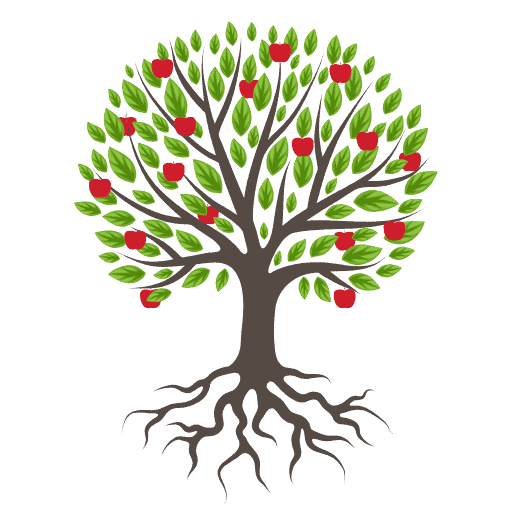

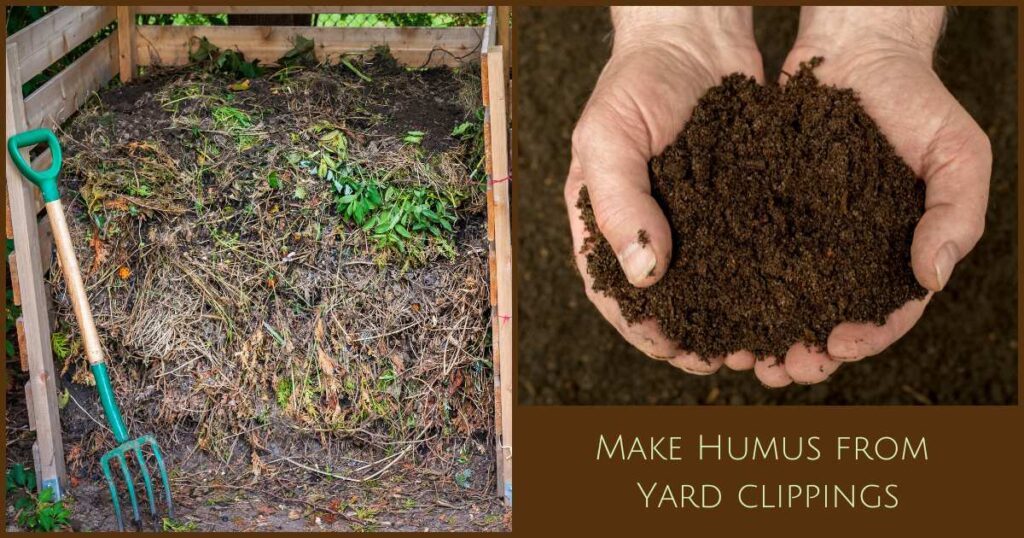
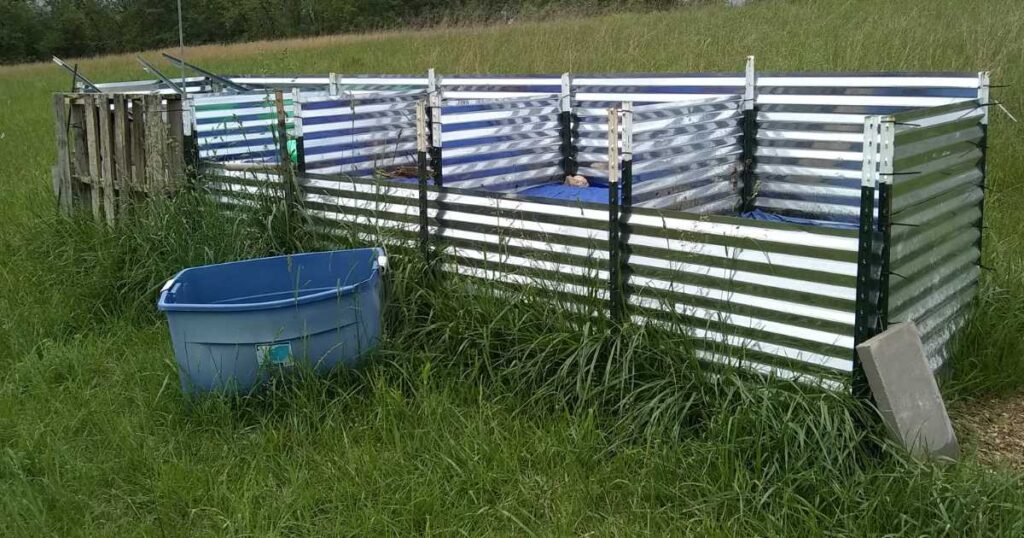
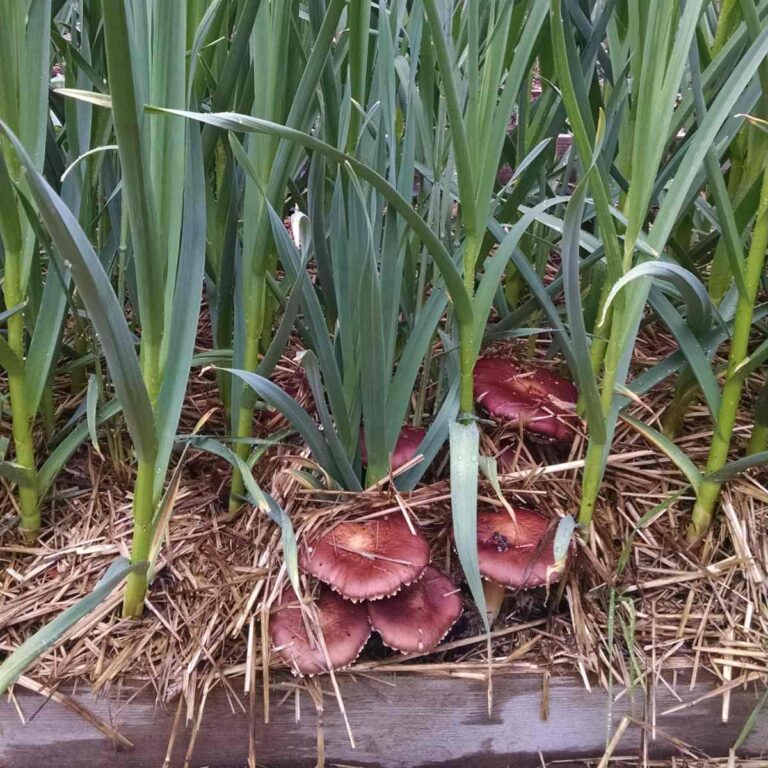
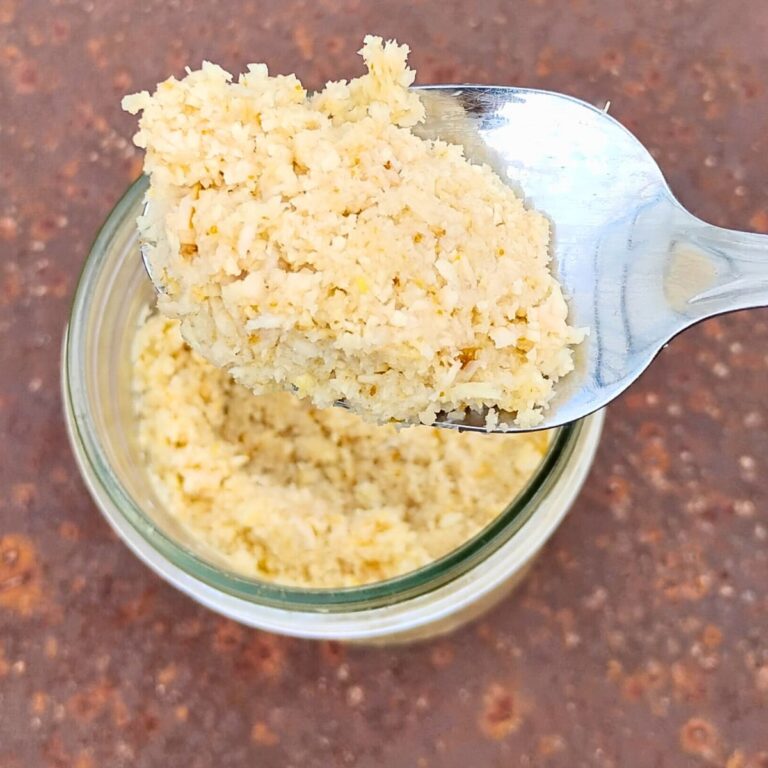
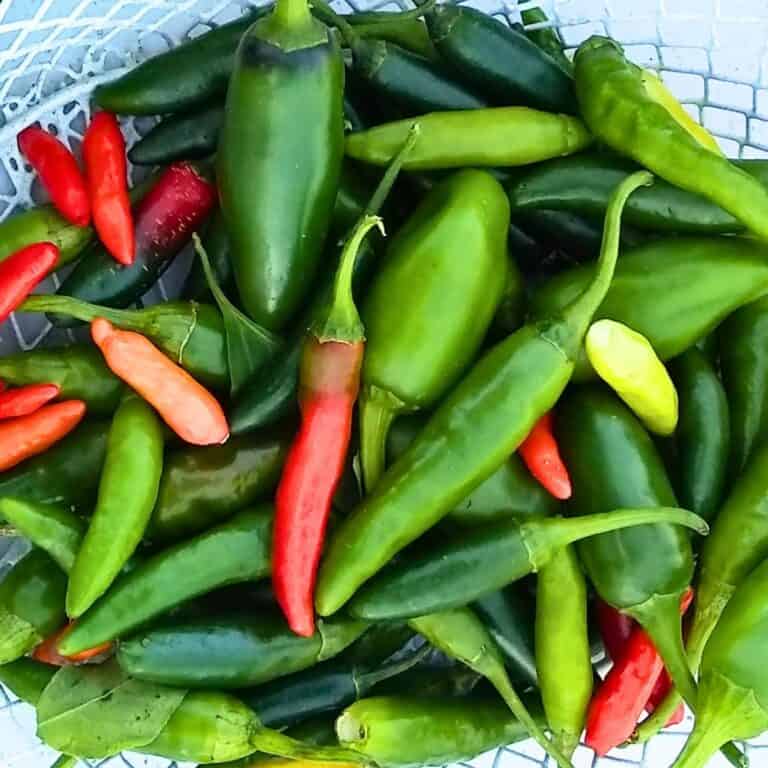
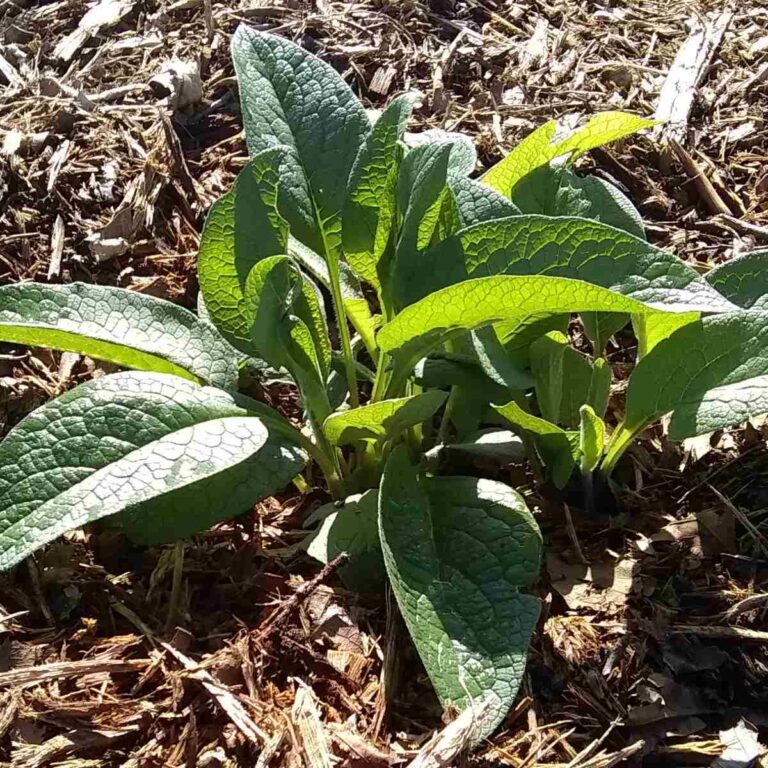
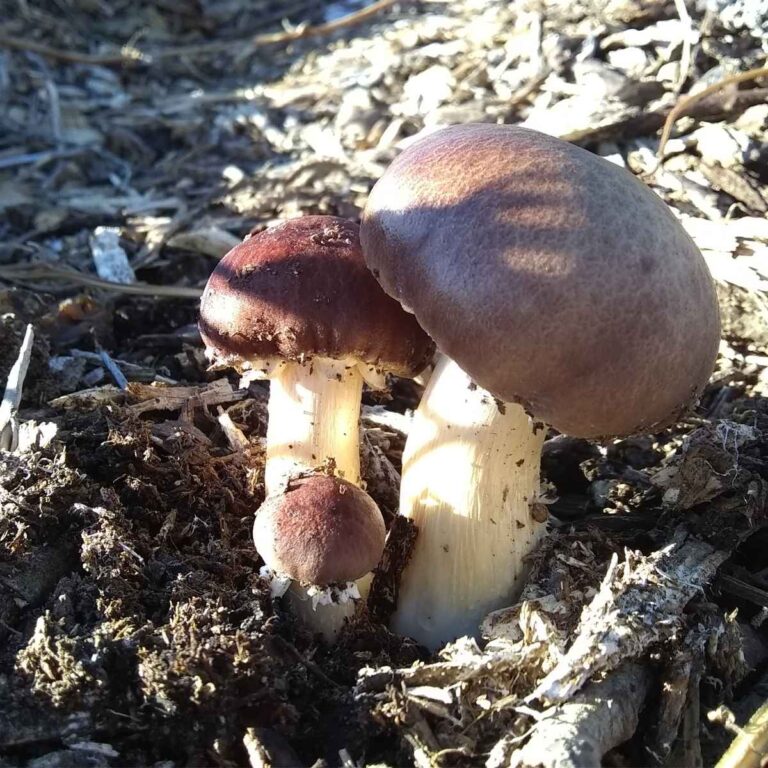
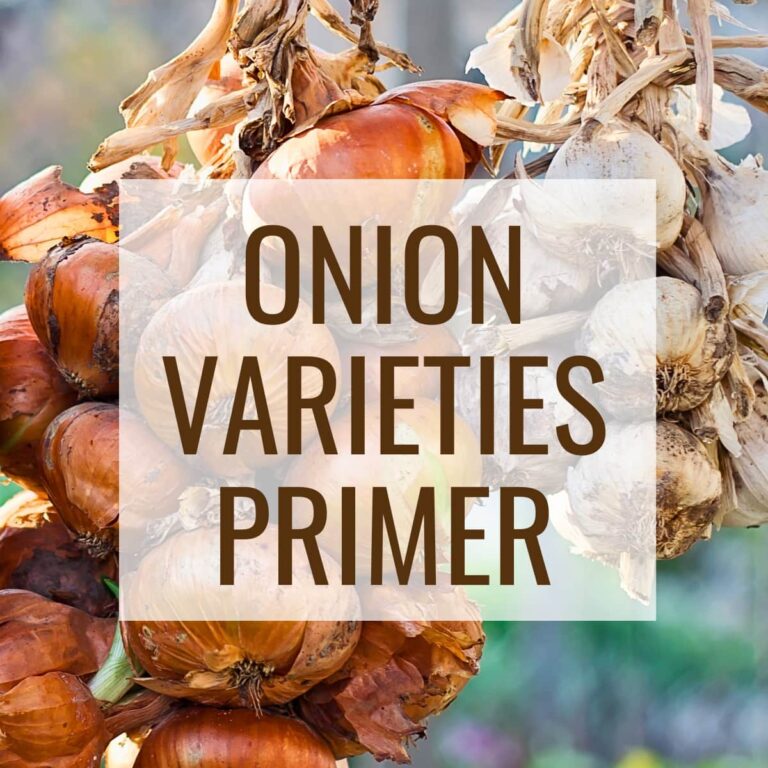
This is AMAZING! I had to pin for later. My husband is a multi-generational farmer. We have livestock, and we garden and preserve and can our harvest… but I’ve tried a couple times to grow fruit trees and failed miserably. Now I see what I was doing wrong! I now have hope to succeed. I’m going to try planting fruit trees again later this year. I can’t wait!
Glad you liked this. Sometimes we can’t force the trees to love our location, but it helps to do all we can to give them a good start. Good luck with planting!